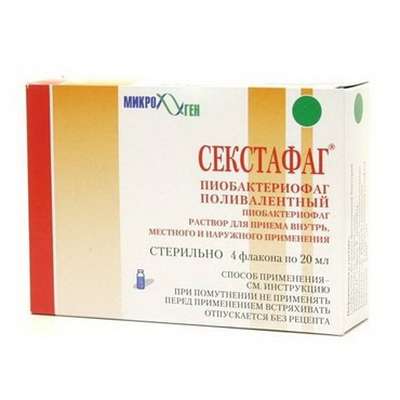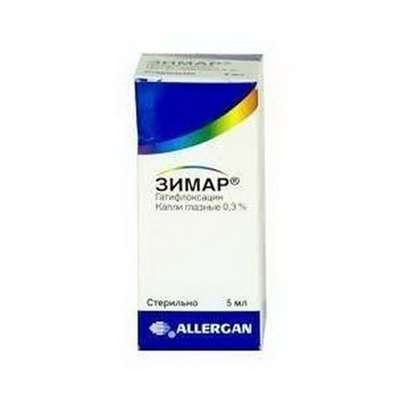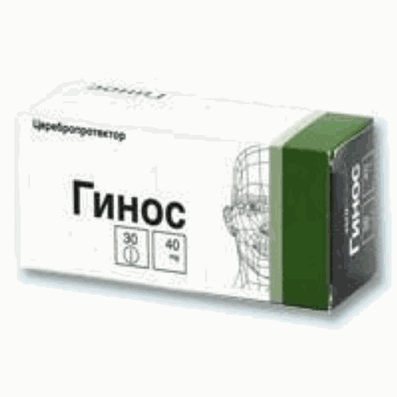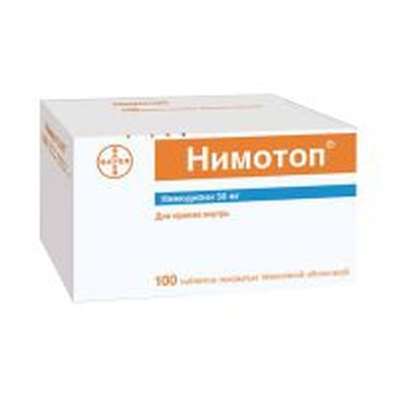Instruction for use: Uman Complex D.I.
I want this, give me price
Dosage form: Lyophilizate for the preparation of solution for infusion; Powder lyophilized for the preparation of solution for injection
Active substance: Factor IX complex
ATX
B02BD Blood coagulation factors
Pharmacological group
Coagulants (including coagulation factors), hemostatics
The nosological classification (ICD-10)
D65 Disseminated intravascular coagulation [defibrillation syndrome]: DIC syndrome; Intravascular coagulation; Hyperfibrinolytic bleeding; Defibrillation Syndrome; Hyperfibrinolytic bleeding; Hyperfibrinolytic bleeding post-traumatic; Hypocoagulant phase of DIC syndrome; Convolation of intravascular disseminated; The syndrome of disseminated intravascular ; Defibrinization syndrome; Coagulopathies acquired
D66 Hereditary factor VIII deficiency: Congenital insufficiency of factor VIII; Hemophilia; Hemophilia A; Hemophilia classical; Deficiency of antihemophilic factor of blood VIII; Deficiency of the coagulation factor VIII; Inhibitory form of hemophilia A; Bleeding at hemophilia A; Hereditary hemophilia; Hereditary anomalies of antihemophilic factor VIII; Failure factor VIII; Insufficiency of coagulation factor VIII; Acquired hemophilia; Coagulopathies are hereditary
D67 Hereditary factor IX deficiency: Congenital factor IX deficiency; Congenital deficiency of the coagulation factor IX; Hemorrhagic syndrome with factor IX deficiency; Hemophilia B; Hemophilia B with a factor IX inhibitor; Hemophilia B in children; Deficiency of the coagulation factor IX; Inhibitory form of hemophilia; Inhibitory form of hemophilia B; Coagulopathies are hereditary; Bleeding and haemorrhage in hemophilia B; Bleeding with acquired or congenital deficiency of factor IX; Hereditary hemophilia
D68 Other disorders of coagulation
D68.8 Other specified disorders of coagulation: Afibrinogenemia; Coagulopathies are hereditary
D69.8 Other specified hemorrhagic conditions: Lightning-fast purpura of newborns; Hemorrhagic diathesis of thrombocytopenic origin
E56.1 Vitamin K deficiency: Vitamin K deficiency; Vitamin K1 deficiency
Z100 * CLASS XXII Surgical practice: Abdominal surgery; adenomectomy; Amputation; Coronary angioplasty; Angioplasty of the carotid arteries; Antiseptic skin treatment for wounds; Antiseptic Hand; Appendectomy; atherectomy; Balloon coronary angioplasty; Vaginal hysterectomy; The coronary bypass; Interventions in the vagina and cervix; Interventions on the bladder; Intervention in the mouth; Restoration and reconstructive surgery; Hand hygiene of medical personnel; Gynecologic surgery; Gynecological intervention; Gynecological surgery; Hypovolemic shock during operations; Disinfection of purulent wounds; Disinfection of wounds edges; Diagnostic intervention; Diagnostic procedures; Cervical Diathermocoagulation; Long-surgery; Replacing the fistula catheters; Infection in orthopedic surgery; Artificial heart valve; cystectomy; Short-term outpatient surgery; Short-term operation; Short surgical procedures; Krikotireotomiya; Blood loss during surgery; Bleeding during surgery and in the postoperative period; Kuldotsentez; laser photocoagulation; laser coagulation; retinal laser coagulation; Laparoscopy; Laparoscopy in Gynecology; CSF fistula; Small gynecological operations; Small surgical procedures; Mastectomy and subsequent plastic; mediastinotomy; Microsurgical operations on the ear; Mukogingivalnye operation; suturing; Minor surgery; neurosurgical operation; Immobilization of the eyeball in ophthalmic surgery; testectomy; pancreatectomy; Perikardektomiya; The period of rehabilitation after surgery; The period of convalescence after surgery; Percutaneous transluminal coronary angioplasty; Pleural thoracentesis; Pneumonia postoperative and posttraumatic; Preparation for surgical procedures; Preparation for surgery; Preparation of the surgeon's hands before surgery; Preparation of the colon for surgical procedures; Postoperative aspiration pneumonia in neurosurgical and thoracic surgery; Postoperative nausea; Postoperative bleeding; postoperative granuloma; postoperative shock; The early postoperative period; myocardial revascularization; Radiectomy; gastric Resection; bowel resection; uterine Resection; liver Resection; enterectomy; Resection of part of the stomach; Reocclusion of the operated vessel; Bonding tissues during surgical procedures; Removal of sutures; Condition after eye surgery; Condition after surgery; Condition after surgery in the nasal cavity; Condition after gastrectomy; Status after resection of the small intestine; Condition after tonsillectomy; Condition after removal of the duodenum; Condition after phlebectomy; Vascular surgery; Splenectomy; Sterilization of surgical instruments; Sterilization of surgical instruments; sternotomy; Dental surgery; Dental intervention in periodontal tissues; strumectomy; Tonsillectomy; Thoracic surgery; Thoracic surgery; total gastrectomy; Transdermal intravascular coronary angioplasty; Transurethral resection; Turbinektomiya; Removal of a tooth; cataract surgery; Removal of cysts; tonsillectomy; Removal of fibroids; Removing the mobile primary teeth; Removing polyps; Removing broken tooth; Removal of the uterus body; Removal of sutures; Fistula likvoroprovodyaschih ways; Frontoetmoidogaymorotomiya; Surgical infection; Surgical treatment of chronic limb ulcers; Surgery; The surgery in the anal area; The surgery on the colon; Surgical practice; The surgical procedure; Surgical interventions; Surgery on the gastrointestinal tract; Surgical procedures on the urinary tract; Surgical procedures on the urinary system; Surgical intervention of the genitourinary system; Surgical procedures on the heart; Surgical manipulation; surgery; Surgery on the veins; Surgical intervention; Vascular surgery; Surgical treatment of thrombosis; Surgery; cholecystectomy; Partial gastric resection; hysterectomy; Percutaneous transluminal coronary angioplasty; Percutaneous transluminal angioplasty; Coronary artery bypass; tooth Extirpation; Extirpation of milk teeth; pulpectomy; pulsative cardiopulmonary bypass; tooth Extraction; teeth Extraction; cataract extraction; Electrocoagulation; endourological intervention; episiotomy; Etmoidotomiya; Complications after tooth extraction
Composition and release form
Lyophilizate for solution for injection (double viral inactivation) 1 fl.
Active substance: Human coagulation factors IX, II and X * 200 IU 500 IU
Auxiliary substances Sodium chloride 81 mg 162 mg
Three-base sodium citrate 25.8 mg 51.6 mg
Glycine 46.3 mg 92.6 mg
Heparin 20 IU 50 IU
Antithrombin III ME / ml <0.125 <0.125
* Activity is indicated for blood factor IX, which is determined according to WHO requirements, the number of coagulation factors II and X corresponds to an average content of 200 or 500 ml of fresh plasma
In bottles of 10 and 20 ml, complete with water for injection in bottles of 10 and 20 ml and a sterile device for the preparation and administration of the solution.
Description
Lyophilizate white or pale yellow. After dissolution, a clear or slightly opalescent colorless or light yellow solution.
Characteristic
Prothrombin complex of human double degree of viral inactivation.
Pharmachologic effect
Mode of action - Hemostatic.
It replenishes the deficiency of coagulation factor IX and eliminates hypercoagulation in patients with its deficiency. The drug in the human body is converted to activated factor IX (IXa) and in combination with factor VIII - factor X in Xa, which causes the transition of prothrombin to thrombin and promotes the formation of a fibrin clot. The drug increases the plasma level of vitamin K-dependent factors of blood coagulation (II, VII, IX, X).
With a decrease in the level of coagulation factor IX below 5%, the risk of spontaneous bleeding increases sharply, the level of coagulation factor IX above 20% ensures satisfactory hemostasis.
Immediately after intravenous administration of the drug in the serum, about 30-40% of the coagulation factor IX is determined, then the haemostatic activity gradually decreases.
Pharmacokinetics
Immediately after intravenous administration in the blood serum, about 30-40% of the coagulation factor IX is determined, then the haemostatic activity gradually decreases.
Indications of the drug Uman Complex D.I.
Treatment and prevention of bleeding with congenital deficiency of one or several factors: factor IX (hemophilia B), factor II (deficiency of prothrombin), factor X (deficit factor Stewart -Prower). Treatment and prevention of bleeding with the acquired deficiency of prothrombin complex factors in patients taking oral coagulants; With liver diseases, vitamin K deficiency; DIC-syndrome. Treatment of hemorrhages with inhibitory forms of hemophilia A and B.
Contraindications
Hypersensitivity to the components of the drug. DIC-syndrome, high risk of thrombosis.
With caution - with coronary artery disease, myocardial infarction in history, liver disease, postoperative period, newborn.
Application of pregnancy and breastfeeding
Perhaps, if the expected effect of therapy exceeds the potential risk to the fetus.
Side effects
The formation of antibodies to one or several factors of the prothrombin complex, an increase in body temperature, rarely allergic and anaphylactic reactions.
Interaction
Do not mix with other drugs.
Dosing and Administration
Doses and duration of substitution therapy depend on the severity of the violation of the hemostatic function, the localization and volume of bleeding, as well as the clinical condition of the patient. The calculation of the required dose is based on empirical data:
1 IU of factor IX / kg of body weight increases the activity of this factor in plasma by 0.8% of normal activity, 1 IU of factor II or factor X / kg of body weight increases the activity of factors II or X by 1.5%.
In patients with congenital factor IX deficiency (hemophilia B), factor II (prothrombin deficiency), factor X (deficiency of the Stewart-Prower factor), the required doses are determined by the following formulas:
The required amount of factor II or factor X = 0.6 x body weight (kg) x required prothrombin time increase (50%);
The necessary amount of factor IX = 1.2 x body weight (kg) x required prothrombin time increase (50%).
With the acquired deficiency of one or more factors of the prothrombin complex:
In patients taking oral anticoagulants, the recommended dose is 35-50 IU / kg.
With a deficiency of vitamin K: the recommended dose is 1.2 x body weight (kg) x the required increase in prothrombin time.
With liver diseases, the initial dose is 50 IU / kg, if necessary, can be repeated after 6-12 hours.
In DIC-syndrome: the initial dose - 50 IU / kg, if necessary, can be repeated after 6-12 hours.
With inhibitory forms of hemophilia A and B: the recommended dose of 75 IU / kg is administered every 8-12 hours.
Overdose
Myocardial infarction, DIC-syndrome, vein thrombosis, pulmonary embolism (when taking high doses).
Precautionary measures
The drug is made from human plasma. When using plasma or products made from human plasma, it is impossible to completely eliminate the transmission of infectious agents, including. Still unknown. To reduce the risk of transmission, a careful selection of donors and harvested plasma is carried out by special testing (monitoring of each portion of plasma used for production of the drug for the absence of HIV type 1 and type 2, HBsAg, antibodies to hepatitis C virus and ALT activity, Each pool of plasma by a polymerase chain reaction to detect the genome of the hepatitis C virus). In addition to testing in the manufacturing process, measures are included for double inactivation of the virus (solvent-detergent method and heat treatment at 100 ° C for 30 min).
Administration of the drug for hemophilia B is possible in the absence of a factor IX concentrate. When anaphylactic reactions occur, the administration is stopped.
Special instructions
Do not mix with other medications. Only approved kits for injection / intravenous infusion should be used (adsorption of factors on the inner surface of inappropriate devices for intravenous administration is possible).
Manufacturer
Kedrion S.p.A., Italy.
A comment
Representation in Russia: Pharma Riace LTD.
The drug is in the process of registration.
Storage conditions of the drug Uman Complex D.I.
In the dark place at a temperature of 2-8 ° C.
Keep out of the reach of children.
The shelf life of the drug Uman Complex D.I.
2 years.
Do not use beyond the expiration date printed on the package.

 Cart
Cart





